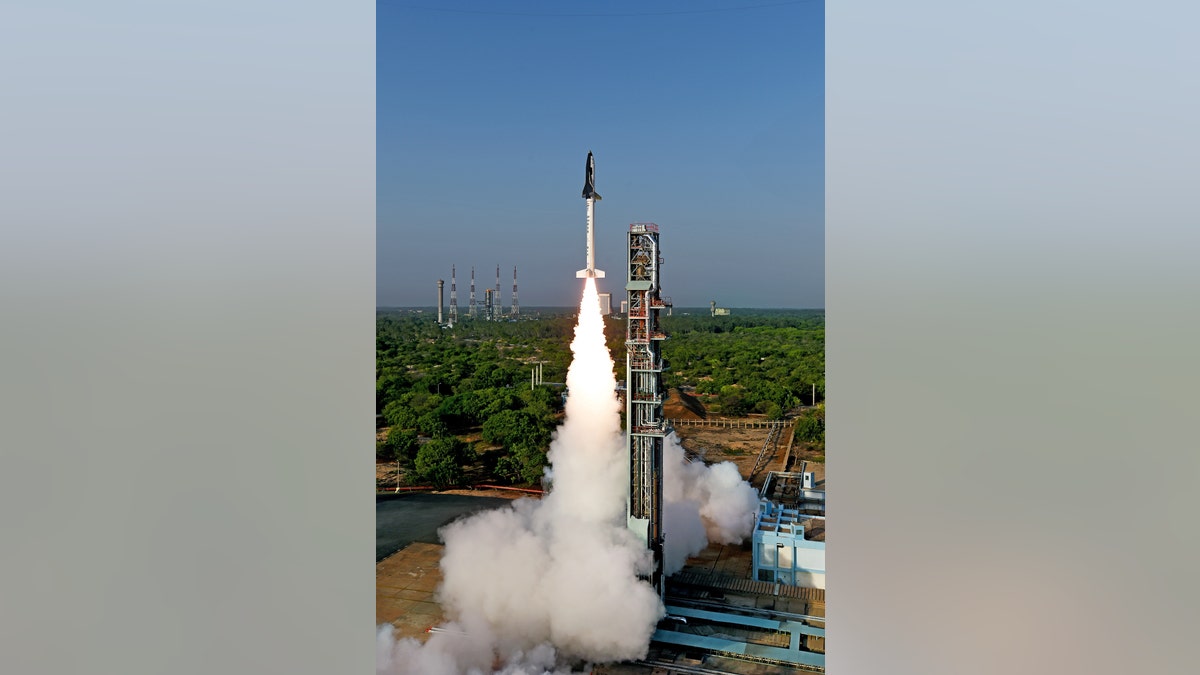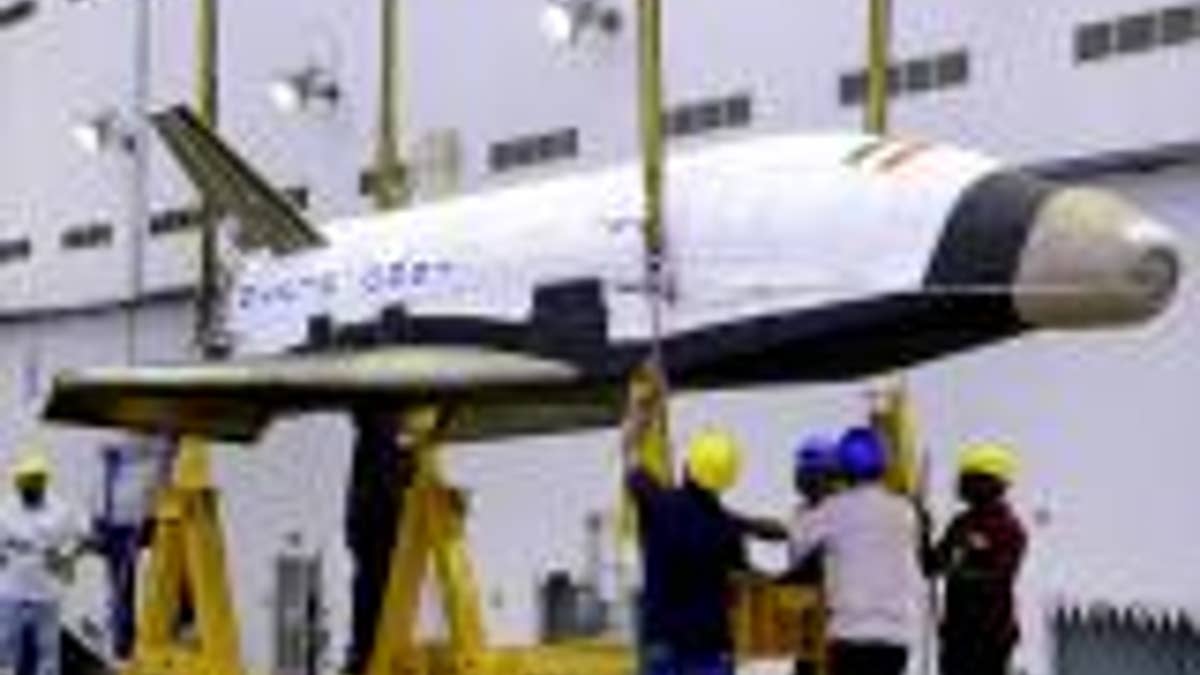
RLV-TD test launch (ISRO).
India performed a successful space shuttle test launch late on Sunday, marking the latest milestone for the country’s space program.
The Reusable Launch Vehicle –Technology Demonstrator (RLV-TD) mini-shuttle is the country’s first space plane. NASA ended its 30-year space shuttle program in 2011.
India’s unmanned shuttle was launched on a HS9 booster rocket from Satish Dhawan Space Centre on Sriharikota, an island off India’s Bay of Bengal coast. The booster burnt out after a “successful flight” of 91.1 seconds, according to the Indian Space Research Organization (ISRO). After burnout the HS9 and RLV-TD coasted to a height of about 35 miles before the shuttle separated from the rocket and ascended to about 41 miles.
Related: Cheap Mars mission could prove lucrative for India, experts say
After reaching its peak altitude, RLV-TD began its descent, which was followed by atmospheric re-entry at around Mach 5. “The vehicle’s Navigation, Guidance and Control system accurately steered the vehicle during this phase for safe descent,” explained ISRO, in a statement. After re-entering Earth’s atmosphere with the help of its Thermal Protection System, the spacecraft glided down to land in the Bay of Bengal, about 280 miles from Sriharikota. Total flight duration from launch to landing was 770 seconds.
“In this flight, critical technologies such as autonomous navigation, guidance & control, reusable thermal protection system and re-entry mission management have been successfully validated,” explained ISRO, in its statement.

(RLV-TD (ISRO).)
RLV-TD is a scale model of India’s planned space plane. The Times of India reports that the final version of the spacecraft is expected in the next 10 to 15 years.
Related: India's Mars orbiter captures beautiful 3D images of the red planet
The successful test earned praise from India’s Prime Minister Narendra Modi. “Launch of India's first indigenous space shuttle RLV-TD is the result of the industrious efforts of our scientists. Congrats to them,” he tweeted.
Monday’s hypersonic flight experiment will be followed by a landing experiment, a return flight experiment and a scramjet propulsion experiment, according to the ISRO.
The launch is the latest achievement for India’s ambitious space program. In 2014 the country won plaudits for successfully launching its low-cost Mangalyaan Mars Orbiter, which experts say could open the door to lucrative space deals with the U.S. and Europe.
Related: NASA picks Dream Chaser space plane for ISS supply missions
The orbiter is India’s first interplanetary space venture.
Despite the space shuttle’s retirement, reusable space planes are set to feature in NASA’s future. In January Sierra Nevada Corporation was among the private space companies awarded NASA contracts to supply the International Space Station from 2019 through 2024. The deal adds Sierra Nevada’s Dream Chaser to the list of spacecraft flying cargo missions to the orbiting laboratory.
NASA says that the runway landings offered by Dream Chaser will be valuable for fragile science experiments returning to Earth from the ISS.
The U.S. military is also harnessing space plane technology, as evidenced by the Air Force's uncrewed X-37B, which recently completed 1 year in orbit.
Follow James Rogers on Twitter @jamesjrogers



















